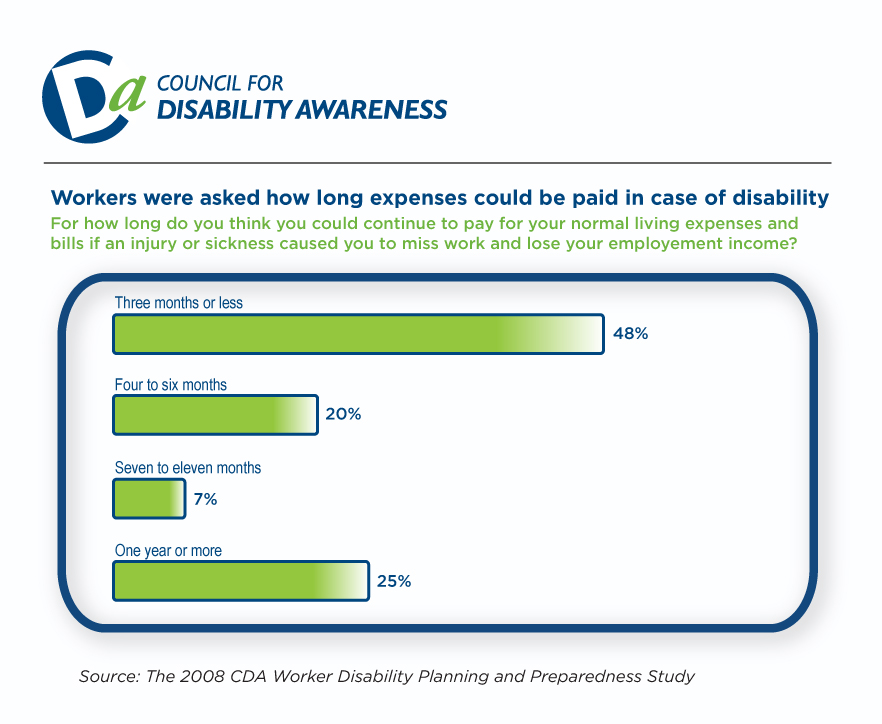 Employees who don't have disability insurance are less likely to return to work after an incident, which increases turnover at a time when the labor market is tight. (Photo: Shutterstock)
Employees who don't have disability insurance are less likely to return to work after an incident, which increases turnover at a time when the labor market is tight. (Photo: Shutterstock)
The best way to celebrate Disability Insurance Awareness Month (DIAM) is to keep more of your clients and their employees safeguarded against financial fragility in the wake of disability. Disability insurance is always important, but DIAM in May can be a great time to emphasize the need for and value of these products. Consider these tips to increase your case rate.
1. Remind clients about the likelihood of disability

You probably know some of the troubling statistics behind disability as well as anyone. But do your clients?
- One out of every four 20-year-olds will become disabled before they turn 67, according to the U.S. Social Security Administration
- The average disability claim lasts 31.6 months, or nearly three years, according to the Council for Disability Awareness
- Only 1/3 of the people who apply for Social Security Disability are approved
- The average payment from SSDI is only $1,171 per month, right at the poverty level
These figures illustrate why it's so important to have private insurance in place. Employers should also understand the business value of offering group disability to their employees.
Related: Long-term disability insurance gets little attention but can pay off big time
According to Metlife's Annual Employee Benefits Study, 64 percent of employees say having insurance would increase loyalty to their employer. On the other hand, employees who don't have disability insurance are less likely to return to work after an incident, which increases turnover at a time when the labor market is tight.
2. Connect disability to life events

People sometimes have trouble thinking of themselves becoming disabled. And while health insurance and savings can offset costs for medical issues, many don't think about how they'll keep the lights on if they're unable to work for a while.
What they can imagine, though, is going through various stages of their life—getting married, starting a first job, buying a house or having a baby—all situations that should cause employees to think about their financial stability.
As a broker, advise your client about products around these life events, and help them relay the need for various types of benefits during these tangible, everyday examples that employees can grab onto.
For example, after someone has a baby, they'll likely want to tap into FMLA. But do they understand that short-term disability can ensure they have an income for a portion of that time? That's right, short-term disability isn't just for illness or injury; maternity leave is also covered by many plans. Likewise, many states and employers offer or require additional provisions for maternity/paternity. Do your clients' employees know how to plan around these various offerings during the huge financial shift that comes with having a child?
Buying a home is another crucial time to consider insurance. A new house likely means new mortgage payments, which won't stop after someone becomes disabled. Insurance would help them keep up with the bills.
3. Tailor presentations by generation

Different age groups have different priorities and concerns. To help your points land, tailor your pitch to your audience's generation or to the demographics of your client's employee population. With millennials now making up much of the workforce, clients may need to educate employees on the prevalence of disability and encourage them to invest in that financial safety net now, when they're feeling invincible, rather than after an event occurs.
And events aren't always the big moments that pop into our heads when we hear “disability.” Injuries can happen any time. For example, slip and fall accidents are the leading cause of lost days from work, according to the Bureau of Labor Statistics. Another reminder to boost participation is that at the start of their career, employees have less vacation time available. It's not likely that time will be sufficient after a disability; plus, it depletes their days off for wellness and time with family.
Gen X should know that they are entering their peak earning years. Over the next 20 years, they'll earn more than they ever did before. They should protect that income with insurance to capitalize on that income and protect the finances they may not want to miss as they approach retirement.
For boomers, point out that the risks of heart disease, cancer, diabetes and other serious health problems that can cause a disability all increase as they get older. They should also know that disability insurance could still be available, but the longer they wait to sign up, the lower their chances of qualifying.
4. Advise on related products

As you review disability, it's an opportunity to discuss related products as well. In 2016, an estimated 25 million Americans enrolled in high-deductible health insurance, where the deductible is about twice the amount of a PPO deductible.
When someone on these plans gets injured or sick, not only will they miss work, but they also could face huge medical bills. As the cost continues to shift to employees, employers are increasingly embracing voluntary benefits and employees are more prone to say “yes” to income protection as well.
Leave is also a hot topic in the industry, but it can be very complicated, and regulations change or are under discussion almost daily. Whether under a state mandate or administering a private leave policy, your discussion of disability also provides an opportunity to ensure your clients are well-versed on the complexities of leave and how the various types of leave work in lockstep with other benefits.
You might not have time to track every detail of leave, but your carrier should have specialists who can. They can educate your clients on this important topic and position you as a technical expert.
5. Take advantage of available resources
The Council for Disability Awareness is a nonprofit with the mission to educate Americans on the risks of disability and steps they can take to protect themselves—namely, getting the right insurance in place.
The CDA provides free support to help insurance professionals enroll more clients. They offer infographics and other client materials, training and continued education for insurance professionals, and networking events.
6. Get support from your carriers

Your insurance carriers are also there to assist during DIAM. They can provide you with additional support materials for your client presentations and even send in a representative to help answer questions, if you're comfortable bringing them in. Be sure the carriers you're working with are well equipped to handle questions but also provide much-needed administration support for clients that may need help navigating or managing their benefits.
Gregory Breter has been with Unum for more than 23 years. He began his career as a disability benefit specialist and has held various positions within the benefits organization throughout this time.
© 2025 ALM Global, LLC, All Rights Reserved. Request academic re-use from www.copyright.com. All other uses, submit a request to [email protected]. For more information visit Asset & Logo Licensing.







